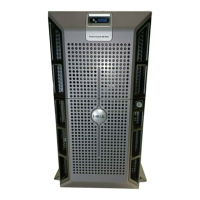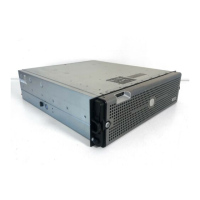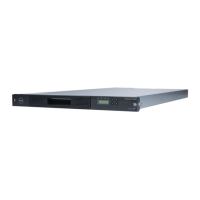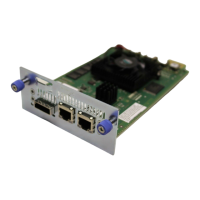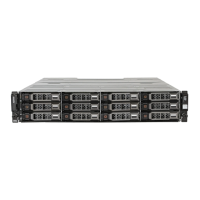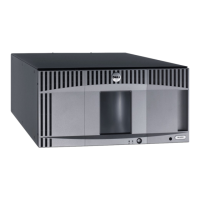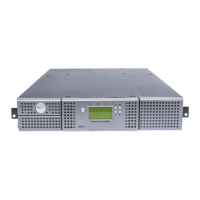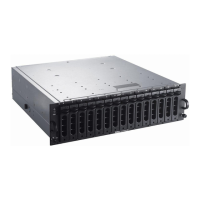the script file; however, the size of this page causes the command text to wrap. You might want to
include blank lines in your script files to separate blocks of commands or make a comment more
outstanding. You can do this by entering two forward slashes (//), which causes the script engine to treat
the line as a comment.
The first line of text is the show string command. This command displays text bounded by quotation
marks (" ") on a monitor screen when the script file runs. In this example, the text Create RAID 5 Virtual
Disk 7 on existing Disk Group 1 serves as a title describing the expected results of running this script file.
The line beginning //Create is a comment explaining that the purpose of this script file is to create a new
virtual disk by using the create virtualDisk command on an existing disk group.
The line beginning //Note: is a comment in the script file explaining that the size of the last virtual disk
created uses all of the available capacity because the capacity parameter is not used.
The command in this example creates a new virtual disk in disk group 1. The virtual disk has a redundant
array of independent disks (RAID) level of 5. The virtual disk name (user label) is 7. (Note the quotation
marks around the 7. The quotation marks indicate that the information in the marks is a label.) The new
virtual disk is assigned to the RAID controller module in slot 0 in the RAID enclosure. The segment size is
set to 16.
The following syntax is the general form of the command:
create virtualDisk diskGroup=diskGroupNumber
userLabel="virtualDiskName" [freeCapacityArea=
freeCapacityIndexNumber] [capacity=
virtualDiskCapacity | owner=(0 | 1) | segmentSize=
segmentSizeValue]
[enclosureLossProtect=(TRUE | FALSE)]
The general form of the command shows the optional parameters in a different sequence than the
optional parameters in the example. You can enter optional parameters in any sequence. You must enter
the required parameters in the sequence shown in the command descriptions.
The line show "Setting additional attributes for virtual disk 7" is another example of using the show
string
command. This command is placed here to tell you that the create virtualDisk command
ran successfully. In addition, properties that could not be set by the create virtualDisk command
are now set.
The set virtualDisk command parameters are shown on separate lines. You do not need to use
separate lines for each parameter. You can enter more than one parameter with the set virtualDisk
command by leaving a space between the parameters.
By using separate lines, however, you can more clearly see what parameters you are setting and the
values to which you are setting the parameters. Blocking the parameters in this manner makes it easier to
edit the file or copy specific parameter settings for use in another script file.
Configuration Script Example 2
This example creates a new virtual disk using the create virtualDisk command with user-defined
physical disks in the storage array.
Show "Create RAID 5 Virtual Disk 2 on existing Disk Group 2";
//This command creates the disk group and the
initial virtual disk on that group.
//Note: For disk groups that use all available
capacity, the last virtual disk on the group is
created using all remaining capacity by omitting
the capacity=virtualDisk creation parameter
390

